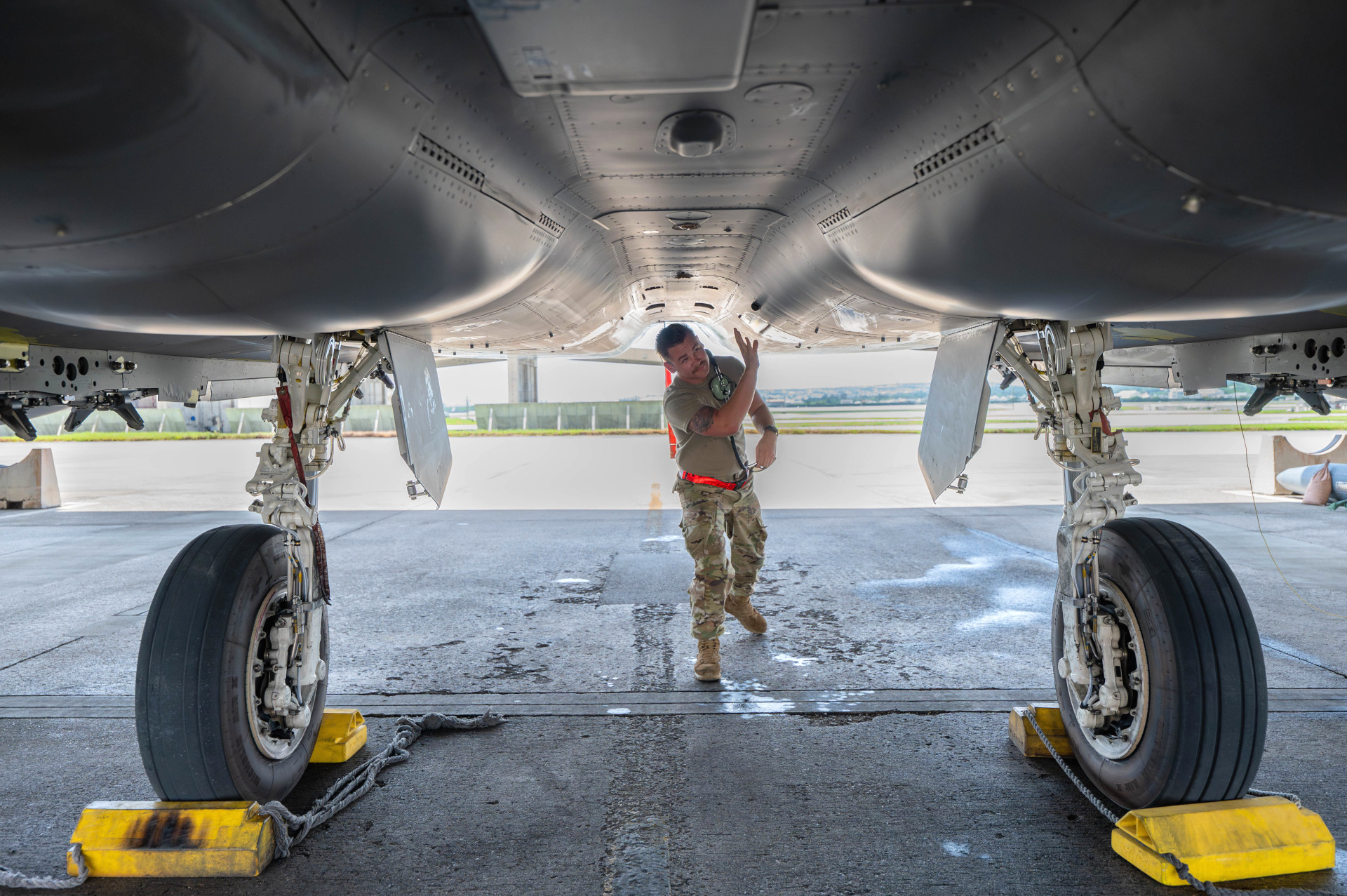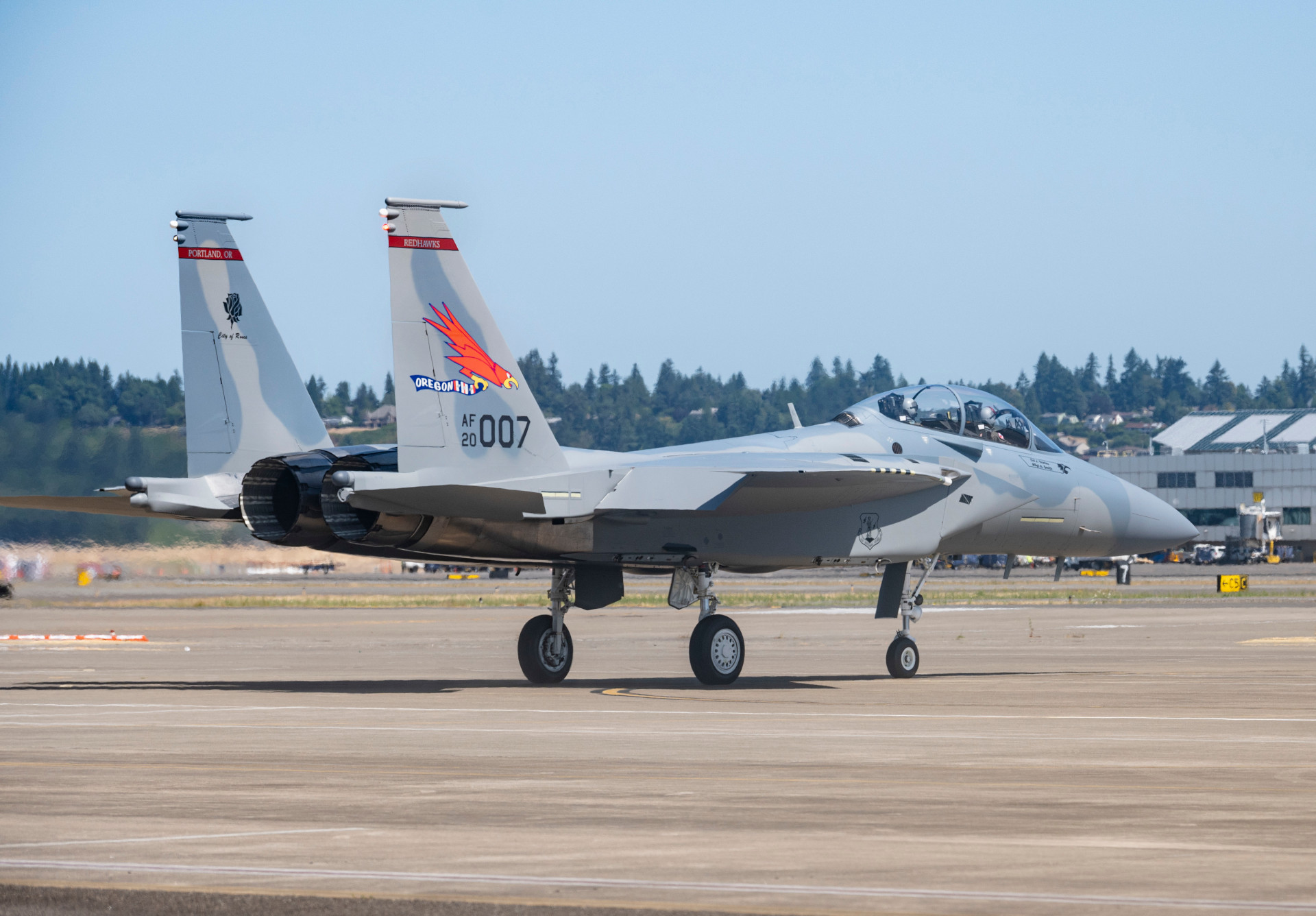The DD Newsletter
Weekly insights and analysis on the latest developments in military technology, strategy, and foreign policy.
A fuel venting issue has emerged in some of the U.S. Air Force’s new F-15EX Eagle II fighters, which has reportedly left them sidelined. The root cause remains under investigation, but manufacturer Boeing is already testing multiple potential fixes.
Aviation Week was first to report on the F-15EX fuel venting troubles in a larger story published last Friday about the Air Force’s progress in fielding the jets. As of May, Boeing had delivered nine Eagle IIs out of what is now a planned fleet of 129 of the aircraft.
Understanding Fuel Venting Issues
“Fuel venting occurs when fuel overflows from the tanks inside the aircraft and, by design, then flows overboard through special ports near the tips of the wings on the F-15,” a Boeing spokesperson told DD today. “It occurs occasionally on various aircraft, including all F-15 models.”
“Some F-15EX aircraft have vented fuel at a higher-than-expected rate, which has a joint USAF and Boeing team investigating the root cause,” they continued. “We have several potential solutions we are testing, including new factory work instructions requiring verification of proper torque on connectors to ensure that’s not a factor, and the team is investigating if we may have a batch of valves showing problems.”
Investigation and Resolution
DD has also reached out to the Air Force for more information.

As noted, aircraft, in general, are equipped with vents for their fuel tanks. In addition to providing a way for fuel to escape if the tanks are overfilled or overpressured, they also allow air in to maintain pressure. Fluctuations in pressure will occur as the fuel in a plane’s tanks expands and contracts due to changes in pressure and/or temperature in the air, including during rapid maneuvers, especially when inverted or on the ground. In flight, fuel venting may look like wing vortices or smoke. Problems with the vents can potentially lead to more serious issues.
Impact on Operations
The fuel venting issues with the F-15EXs have been significant enough to keep some of them “on the ground,” at least temporarily, according to Aviation Week‘s Brian Everstine. How many of the Eagle IIs delivered to date are impacted is unclear. It is also not clear why this has only emerged now, as the basic EX airframe has been flying for years.
Boeing’s Response and Future Plans
“We’ll manage through this. I wouldn’t worry too much about the implications of the strike. We’ll manage our way through that,” Kelly Ortberg, Boeing’s CEO, said during an earnings call last week when asked about the potential implications of a strike.
Though the F-15EX fuel venting issue appears to be relatively limited at present, it does come at a time when Boeing is just starting to rebound after years of serious upheaval and problems on both the commercial and defense sides of its business. This includes technical and quality control issues that have caused delays and cost growth across a number of major programs for the U.S. military, including the future VC-25B Air Force One jets, T-7A Red Hawk jet trainers, and KC-46 tankers. Boeing did notably win the Air Force’s sixth-generation stealth fighter earlier this year with what is now designated the F-47.
From all indications, the F-15EX has otherwise been a model program, at least on the testing and evaluation front, helped in part by the well-established underlying design. The Oregon Air National Guard’s 142nd Fighter Wing has been leading the way in fielding the F-15EX operationally within the Air Force, as you can read about more in this past DD feature. The California, Louisiana, and Michigan Air National Guards are also in line to get a squadron each of Eagle IIs. The F-15EXs will also be assigned to two active-duty squadrons forward deployed at Kadena Air Base in Japan. The Eagle II test jets just made their first-ever trip to the Pacific in July as part of the Resolute Force Pacific 2025 large-scale exercise.
